BEFORE ELI Whitney invented the cotton gin, Southern plantation owners were beginning to wonder if they should not give up their slaves. There was a good market for cotton; the English were buying all the cotton they could get to make into cloth in their new factories. It took too long to separate raw cotton from the seed and raising cotton simply did not pay. If the plantation owners stopped raising cotton, they would really have no need for slaves.
Then after the invention of the cotton gin, raising cotton began to pay — and pay well! Cotton became the South’s big cash crop and the more cotton the plantation owners raised, the more slaves they needed. So, slavery grew in the South while it was dying out in other parts of the world. Slavery had been outlawed in the British colonies in 1833, in the French colonies fifteen years later; by this time, too, most of the Latin-American republics had liberated their slaves.
The economy of the South was based on slave labour and the vast estates of the plantation owners, with their mansions, slave quarters and outbuildings, resembled the manors of feudal Europe. As a matter of fact, there was much in Southern society that resembled feudalism. The plantation owners formed a kind of aristocracy and lived the lives of country gentlemen; they owned most of the slaves and most of the land. The poorer Southerners also lived by farming, but their land holdings were small and they worked in the fields beside the one or two slaves they could afford.
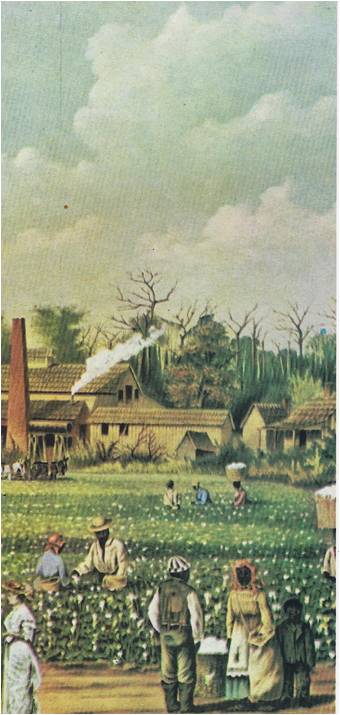
The South had little industry. In the North, on the other hand, while thousands of people still lived by farming, industry was growing day by day. The North needed free labour rather than slaves and Northerners began to look upon slavery as evil. Southerners replied that their slaves were better off than the men, women and children who worked in the factories of the North. Under slavery there was no unemployment and the old and the sick were cared for. Slaves cost hundreds of dollars; they were valuable property and their owners were concerned about keeping them in good health. Why, slaves should consider themselves lucky! Hadn’t they been taken from the African jungles and introduced to civilization and the Christian religion? Furthermore, there was nothing in Christianity that was opposed to slavery; the Bible had many passages dealing with slavery and the treatment of slaves. Some Southern leaders, like Senator John Calhoun, said that high levels of culture and society could be reached only with the help of slavery and they pointed to ancient Greece as an example.
Such arguments failed to convince the Northerners. They insisted that slavery was evil and that keeping slaves was a sin. Even so, slavery did not become an issue until Americans began pouring into the West. Some settled on the great plains beyond the Mississippi, which Jefferson had bought from France in the Louisiana Purchase of 1803. Others pushed across the continent to the Oregon territory, which was claimed by both England and France. Still others settled in Texas and California which belonged to Mexico.
Texas won independence from Mexico in 1836 and was admitted as a state in 1845. This led to a boundary dispute between Mexico and the United States and war broke out when the United States army marched into the region claimed by both countries. The United States won the war and by the treaty of 1848 Mexico gave the United States an area larger than that of France and Germany combined. It included what is now Texas, Nevada, Utah, California, much of New Mexico, Arizona and some parts of Oklahoma, Kansas, Colorado and Wyoming. After the war, gold was discovered in California and thousands of Americans swarmed into California in the famous Gold Rush of 1849. During me next few years, news of gold and silver strikes in the Rocky Mountains drew more thousands of Americans from the East.
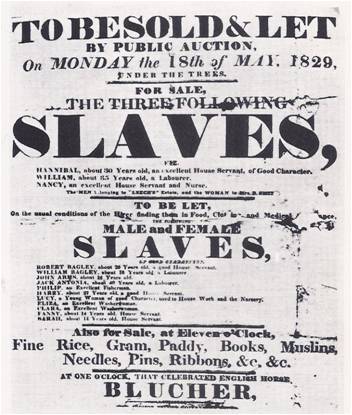
As the various regions of the West developed and grew in population, they asked Congress to admit them to the Union as states — and Congress had to decide whether the new states would have slavery or be free. The issue arose as early as 1820, when Missouri asked to be admitted as a slave state. The North opposed this. If Missouri came in as a slave state, what would prevent slavery from spreading to all parts of the West? Besides, there were now an equal number of slave and free states in the Union and in the Senate, where each state was represented by two senators, the North and the South had equal voting strength. If Missouri was admitted as a slave state, the South would have more votes than the North. Congress worked out an agreement called the Missouri Compromise which kept the balance of voting strength in the Senate. Missouri was admitted as a slave state, while Maine, which had been part of Massachusetts, was admitted as a free state. Later, Congress followed the same policy in admitting six more states. Slave Arkansas and free Michigan were paired, as were slave Florida and free Iowa and slave Texas and free Wisconsin.
The Missouri Compromise did little to soothe feelings in either the North or the South. Northerners with extreme views on slavery, known as Abolitionists, formed societies that demanded the immediate end of slavery everywhere in the nation. An Abolitionist newspaper, the Liberator‚ encouraged slaves to revolt against their masters and Southerners blamed it for the slave rebellion in Virginia in 1831. Southerners were also bitter over the Underground Railroad. This was not a railroad at all, but a system of helping runaway slaves escape over secret routes to Canada, where slavery was outlawed and a slave who entered at once became a free man. Quakers and others whose religion made them opposed to slavery were active in the Underground Railroad. Southerners said they were criminals; a slave was valuable property and helping a runaway slave was like helping a thief make off with stolen goods.
Southerners were especially angry when, in 1846, the North tried to get Congress to pass a law keeping slavery out of any territory the United States might receive from Mexico. Were men to be forbidden to take their private property into territory they had helped win with their own blood? Southern leaders said their states would leave the Union if the bill passed and demanded that all the Southwest territory be open to slavery.
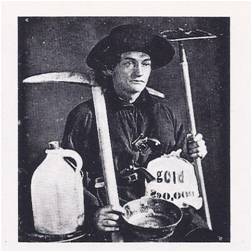
Congress again reached an agreement in which each side gave up some of the things it wanted. Under the Compromise of 1850, California entered the Union as a free state. Texas, already a slave state, was to be a little reduced in size. Slaves could no longer be bought and sold in Washington, the nation’s capital. Stranger laws would help return runaway slaves to their masters. Most important of all, each new state carved out of the territory won from Mexico would have the right to decide for itself, by popular vote, whether to enter the Union as a slave state or free.
Again neither side was satisfied with the compromise. Northern leaders said that slavery was morally wrong, nothing the government did could make it right, and it must come to an end. Senator Calhoun expressed the feelings of Southerners when he said that Congress did not have the power to stop any citizen from taking his property into any American territory. He warned that unless the North stopped interfering with the rights of the South, the two sections would have to “separate and part in peace.”
By this time, the North and the South were more than merely two sections of the same country — their societies were developing in two different directions. Southerners were beginning to say that all men who laboured, white as well as black, were inferior and had to be governed by their betters, the large landowners. As time passed, they seemed to have less and less in common with the people of the democratic North. Although only ten percent of white Southerners owned slaves, they were supported by the majority of the whites.
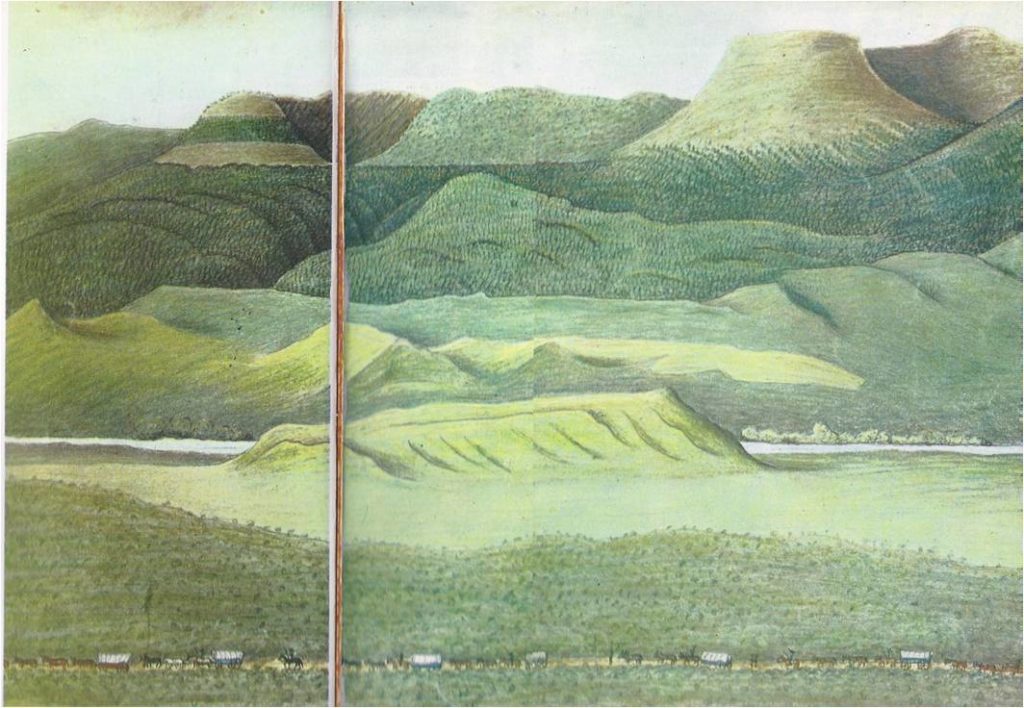
In 1852, Northerners were stirred by Harriet Beecher Stowe’s novel, Uncle Tom’s Cabin. The story of the cruel life of several Negro slaves, it quickly sold an enormous number of copies. It made the evils of slavery so real that many Northerners spoke about marching into the South and freeing the slaves by force.
Two years later, Congress passed the Kansas-Nebraska Act, which applied the policy of “popular sovereignty” to the Kansas Territory.
Popular sovereignty meant simply that the settlers in the territory would decide by vote whether slavery would be allowed or not. Northerners were shocked and dismayed. Under the Missouri Compromise of 1820, the Kansas Territory had been declared free; now it was being thrown open to slavery.
THE KANSAS-NEBRASKA ACT
The Kansas-Nebraska Act marked the real breaking point of the North and the South, set in motion the events that led to the Civil War. The same year that the act was passed, a new political party, known as the Republican Party, was formed in the North and within two years it had won the support of a majority of Northerners. The Republicans said that Congress must forbid the spread of slavery to any of the territories. Slavery must be kept within the South, where, in time, it would die out.
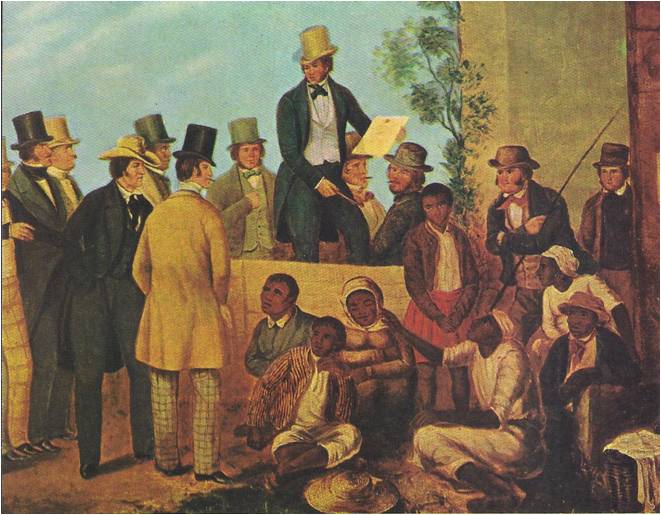
As it turned out, Southerners, too, were unhappy with the Kansas-Nebraska Act. Both the North and the South rushed settlers into the territory. The slave owners tried to win control by illegal and violent methods and the territory became known as “Bleeding Kansas.” By 1858 it was clear that the pro-slavery settlers were outnumbered and that Kansas would not enter the Union as a slave state. Southerners then opposed popular sovereignty, insisting that the right to own slaves in the territories should be guaranteed by the Federal government.
The South was greatly encouraged when, in 1857, the Supreme Court of the United States made one of its most famous decisions. It ruled that a slave named Dred Scott could not claim the rights of a free man simply because his master had taken him into free territory. A slave was not a citizen and could not sue for his freedom in a Federal court. The decision meant that Congress had no power to forbid slavery in the territories and that the Missouri Compromise was unconstitutional.
The Republican party, by this time the largest party in the North, angrily attacked the ruling. Pointing out that most of the judges on the court were from the South, the Republicans charged that the ruling was just another scheme to spread slavery throughout the nation. One Northerner wrote that if the decision was accepted as law, then “wherever our flag floats, it is the flag of slavery. If so, that flag should have the light of the stars and the streaks of morning red erased from it; it should be dyed black and its device should be the whip and the fetter. Are we to accept, without question, these new readings of the Constitution . . .? Never! Never!”
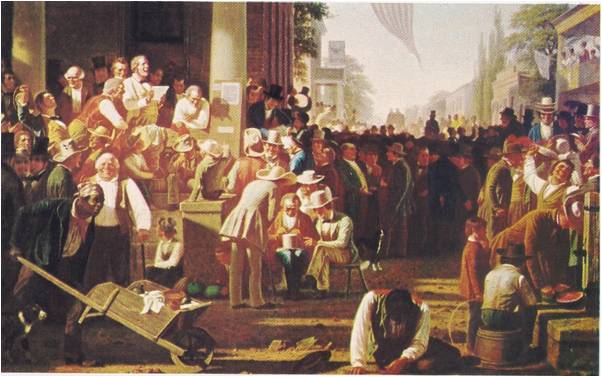
Alarmed and confused, Northerners were particularly anxious to hear what Senator Stephen A. Douglas of Illinois had to say about the decision. He had written the Kansas-Nebraska Act and was one of the leading politicians of his day. He was running for re-election in 1858 against a tall, awkward lawyer named Abraham Lincoln. During the campaign the two candidates held a series of debates that attracted the attention of the entire nation.
Douglas declared that the slavery problem could best be solved by allowing the people of each new state in the West to decide for themselves whether they wished to be slave or free. Lincoln tried to make Douglas admit that under the Dred Scott decision neither the people in the territories nor Congress had the right to forbid slavery. Douglas argued that slavery could not exist anywhere unless it was protected by local laws and police regulations. Therefore, the people could do away with slavery simply by refusing to pass local laws and regulations protecting it.
Lincoln urged the voters of Illinois to defeat Douglas because of his willingness to allow slavery to spread in the West so long as it was approved by the people in the territories. Lincoln made it plain that he thought slavery was wrong. Speaking of the situation in the United States, he said that “a house divided against itself cannot stand . . . this government cannot endure, permanently half slave and half free . . . I do not expect the Union to be dissolved — I do not expect the house to fall — but I expect it will cease to be divided. It will become all one thing, or all another.”
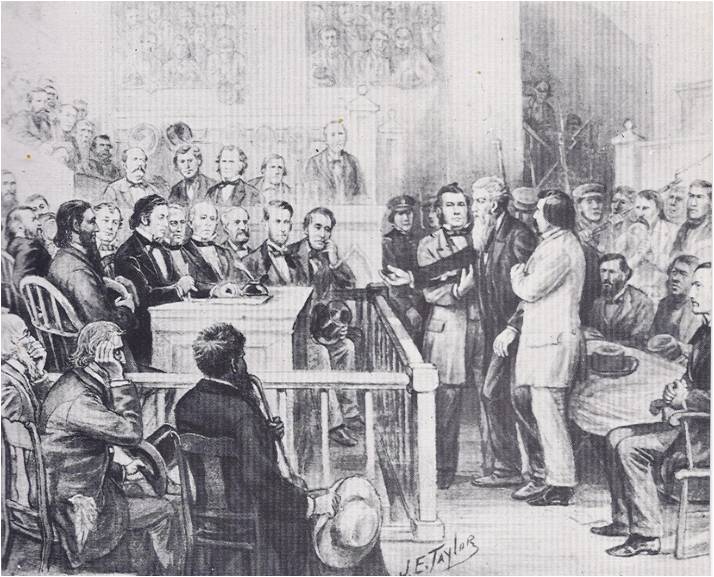
Although Lincoln lost the election, the debates made him known throughout the nation and many Northerners approved of his views. A number of Abolitionists were not satisfied with words; they wanted action to end slavery completely and at once. Among them was John Brown, who felt that God had given him the mission to fight against slavery. On October 16, 1839, John Brown and twenty-one followers captured an army supply depot at Harpers Ferry, Virginia. The purpose of the raid was to arm the slaves and encourage them to rise up against their masters. Fighting against state troops and a force of U.S. Marines led by Colonel Robert E. Lee and Lieutenant J. E. B. Stuart, ten of the little band were killed. Four escaped, and the rest, including John Brown, were captured. They were tried, found guilty of murder and treason, on December 2, 1859, were hanged in public.
A wave of excitement swept the country. Southerners charged that John Brown had been an agent of the Republican party. The raid was “the invasion of a State by a murderous gang of abolitionists bent on inciting slaves to murder helpless women and children.” Many Northerners praised John Brown as a hero, a martyr who had laid down his life for the cause of liberty for all men. Ralph Waldo Emerson described him as “that new saint than whom none purer or more brave was ever led by love of men into conflict and death. . . .”
There was now open hatred between Northerners and Southerners.





